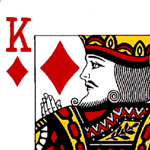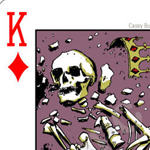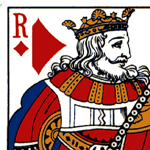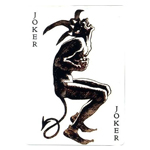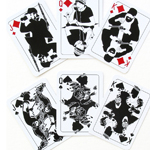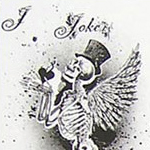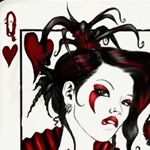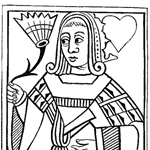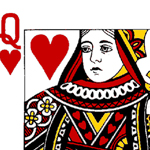
Playing cards are often featured in a multitude of tattoo designs. And the tattoo designs make full use of many of the symbols to be found in a deck of cards, all the way from the Ace of Spades, to the Queen of Hearts, to the 'wild' Joker. The modern pack of playing cards can be traced back to Medieval Europe, when cards were a dalliance of the rich. Printing techniques eventually made mass production possible so that playing cards became popular with common folk as well. A deck of cards consisted of 'royals' (also called 'court' cards), comprised of King, Queen and Knight (later termed 'Jack') - and number cards ranging from the 2 (deuce) to 10. The Ace, which derived from the Latin for the 'smallest coinage', took the lowest value of one. The four suits, Spades, Hearts, Diamonds and Clubs (originally cups, swords, coins and batons) came in two colors, red and black. In the 1500s, a pack became standardized to the 52 cards we have today.
Playing cards are also often featured in tattoo designs that warn of the perils of gambling, such as in 'Man's Ruin'. Man's Ruin designs feature the vices that can lean a man astray in life, such as women of easy virtue, alcohol, drugs, and gambling - which may be represented by billiard balls, pool cues, dice, playing cards and perhaps even a horseshoe as a symbol of betting on the horses at the track.
As tattoo designs, playing cards are a metaphor for life. As players we can no more determine or predict the cards that will turn up in a deck of cards than we can predict the future in a capricious universe. Sometimes in life, as in games of chance, it is more important to be lucky than to be talented. Having a winning hand tattooed on your body may be just the luck you need to make the difference between winning and losing!
See also: Lucky Tattoo Index.


